
Start your career as a 2D animator for film, TV and games! CG Spectrum’s offers specialized online career training and mentorship from expert animators working at top studios. Get access to career services and a supportive community. Learn more.
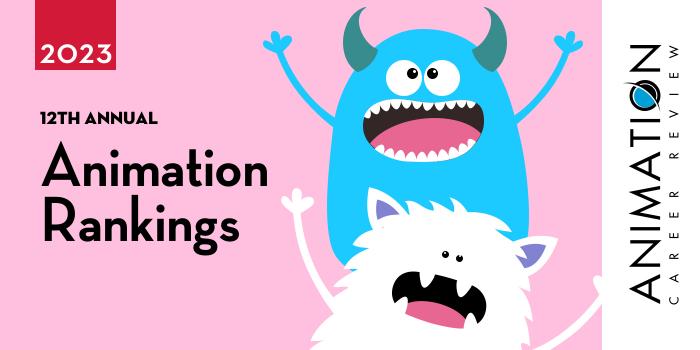
| Ranking | School | City |
|---|---|---|
| 1 | RMIT University | Melbourne |
| 2 | Griffith University | Queensland |
| 3 | Media Design School | Auckland |
| 4 | University of Technology Sydney | Sydney |
| 5 | University of Melbourne | Multiple |
| 6 | Queensland University of Technology | Brisbane |
| 7 | Swinburne University of Technology | Melbourne |
| 8 | Deakin University | Victoria |
| 9 | Academy of Interactive Technology | Multiple |
| 10 | Australian National University | Canberra |
For this ranking we only consider formal degree programs (bachelor's degree or equivalent). For an explanation of our ranking criteria, click here.

RMIT University (RMIT) houses the College of Design and Social Context (DSC), home to eight schools, 21,000 students, and more than 1,000 academics and teachers. DSC Programs range from Certificates to PhDs in Art, Design, Media and Communication, Fashion, Architecture, Education, Property Management, and Social Studies.
The School of Design at RMIT University (RMIT) is part of the College of DSC. The School has several paths to study Animation. At the undergraduate level, RMIT has an Animation and Interactive Media BDes. Graduate students may enroll in the Master of Animation, Games and Interactivity or the Graduate Certificate in this area.
The Animation and Interactive Media BDes is a full-time, studio-based program that explores 2D and 3D Animation, Interactive Media, and Special Effects (SFX). Courses are hands-on and include Animation and Interactive Media Studio 1-4, Animation and Interactive Media Design for Movement, 2D and 3D Animation, Sound Design for animation, Advanced Visual Effects, and 3D Animation Practice, among others. Students will also have opportunities to take electives to develop skills in Sound Design, Experimental Video, Alternative Animation, and more.
In the final year of this three-year program, Animation students will collaborate on projects with peers, and produce a major industry-ready work on their own.
Graduates of the RMIT Animation and Interactive Media BDes Program are Animators, 3D Visualizers and Modelers, Digital Artists, Art Directors, Character Designers, Motion Graphic Designers, Pre-Production Artists, and Visual Effects (VFX) Artists. Some program graduates teach, while others have launched their own studios and freelance businesses.
Program alumni have exhibited at festivals and conferences such as Annecy, London International Animation Festival (LIAF), ACM SIGGRAPH (Association for Computing Machinery-Special Interest Group on Computer Graphics and Interactive Techniques), and Melbourne International Animation Festival (MIAF). They have also been hired at major studios and agencies such as LucasArts, Viskatoons, and Method Studios (formerly Iloura).
The Graduate Certificate in Animation, Games, and Interactivity at RMIT University consist of three courses: Professional Preproduction; Animation, Games and Interactivity Studio 1; and The Illusion of Life. This six-month program prepares students for careers in Animation and Games, and it guarantees entry into the Master of Animation, Games, and Interactivity.
The RMIT Master of Animation, Games, and Interactivity features access to industry-standard technology and contemporary studios; a collaborative learning and production environment with access to industry professionals, academic staff, and research centers such as the Centre for Games Design Research; the opportunity to work alongside the creative co-working community ACMI X; and the chance to exhibit at Melbourne International Film Festival (MIFF).
Course examples include Animation, Games and Interactivity Studio 1-3; Advanced Play Design; Character, Place and Simulation; Animated Narratives; Research Methods for Design and Digital Media; and Professional Preproduction. In year two of the program, students will complete the Professional Research Project (Animation, Games and Interactivity) worth 24 credit points, and the Animation, Games and Interactivity Industry Portfolio, worth 12 credit points.
The Master of Animation, Games and Interactivity can be completed in two years full-time or four years part-time. Graduates are prepared for advanced technical careers in all areas of Animation, Games, and Interactive Media.
Founded in 1887, RMIT University employs nearly 10,000 global staff members that serve more than 90,000 students across three campuses and two sites in Australia, two campuses in Vietnam, and a research and industry collaboration center in Spain. RMIT also provides programs to students through partners in Singapore, Hong Kong, China, Indonesia, Sri Lanka, India, Belgium, Germany, Austria, and the Netherlands. The undergraduate and graduate programs at EMIT are housed across four academic colleges and 16 academic schools.

Griffith University (Griffith U) is home to Griffith Film School—the largest school of its kind in Australia. A Toon Boom Center of Excellence (COE), Griffith Film School has an Animation Program that allows students to collaborate with fellow artists in Griffith U’s Queensland College of Art (QCA) and Queensland Conservatorium. Students also have the opportunity to collaborate on productions with partner institutions such as Beijing Film Academy and Falmouth University.
Other program features participation in workshops, seminars, and masterclass programs delivered by industry professionals from LucasFilm, Disney, WETA FX, and Gobelins Paris; access to state-of-the art studios and labs; and participation in film festivals and exchange study tours.
Leading to a Bachelor of Animation, the Animation Program at Griffith University has three majors: Animating, Art Direction, and CGI Technical Direction. Students in all programs have the option to work with 3D puppet or clay animation; experimental media; 2D, 3D, or motion-capture digital animation; or traditional drawn animation.
Animation students will also have opportunities to work on projects for real clients through LiveLab Griffith Film School’s commercial production division. The Internship Program at Griffith U provides additional opportunities to gain valuable experience with a local studio before graduation. Examples include Liquid Animation Studios, Pixel Zoo, Alt.VFX, and Ludo (Bluey).
Graduates of the Bachelor of Animation Program at Griffith University are prepared to pursue careers in areas such as Character Design for 2D and CGI/3D-Animated Projects, Motion Capture, Visual Effects (VFX), Illustration, Production Management, Storyboarding, 2D- 3D- and Stop-Motion Animation, Compositing, Comics and Graphic Art, Pre-Visualization, Scriptwriting, and Matte Painting.
Established in 1975, Griffith University is named after Sir Samuel Walker Griffith, former Queensland Premier and the first Chief Justice of the High Court of Australia, who was the first in the country to introduce degrees in Environmental Science and Modern Asian Studies. Griffith U serves more than 55,000 students enrolled in more than 200 degree programs across the Digital Campus and five physical campuses in South East Queensland, Australia. Programs at Griffith U are housed across more than 20 schools and departments managed by 4,000 instructors and staff.

Media Design School (MDS) is a Houdini Certified School and the only Unity Authorized Training and Certification partner in New Zealand. MDS also houses the country’s oldest 3D Animation Program. Accredited by the NZQA New Zealand Qualifications Framework (NZQF), the program leads to a Bachelor of Art & Design in 3D Animation & VFX.
Students in this 400-credit, project-based program will develop technical Animation skills as they relate to Game Design, Virtual Reality (VR), Film, Television, and Advertising. Learning takes place in a studio-like environment, with courses such as Animation: Mechanics, Expressions and Gestures, Digital Art I-II, Motion Design Production Techniques, 3D Rendering, Animation: Workflow and Principles, Advanced 3D Technical Studies, 3D Modeling, Animation: Non Verbal Communication, Motion Design Animation, Visual Effects 2D Compositing, and Advanced Creature Animation.
Utilizing state-of-the-art production facilities and equipment, First-Year students will complete Foundation Mini-Project, worth 20 credits. This component consists of a short 3D production. In Year Two of the MDS 3D Animation & VFX Program, students will select a specialization in VFX and complete a 15-credit Mini Project. In Year Three (the final year of the program) students will complete Team Production I-II, worth a total 85 credits. This component consists of a state-of-the-art short film.
Each student will also complete Advanced Individual Production worth 20 credits. This component allows students to complete a project in their area of specialization. This major production will be entered into the international film festival circuit.
Student films have been official selections OR won awards at the San Diego Comic-Con International Independent Film Festival, SIGGRAPH Asia, SXSW Film Festival, Irvine International Film Fest, South Dakota Film Festival, Annecy Festival, Toronto Shorts Film Festival, LA Shorts International Film Festival, British Animation Film Festival, Nashville Film Festival, Rochester International Film Festival, Palm Springs International Animation Fest, Scandinavian International Film Festival, and many others.
Graduates of the 3D Animation & VFX Program at Media Design School are prepared for careers such as Animator, Compositor, 3D Modeler, VFX Artist, Effects Designer, and Technical Director. Graduates have gone on to secure positions at major studios such as Warner Bros., LucasFilm Singapore, Disney, Microsoft UK, DreamWorks, and Weta Digital New Zealand, among others. Program alumni have also worked on major productions such as The Hobbit and Avatar.
Founded in 1998, Media Design School began with a small collection of Diploma programs. Today, this private post-secondary institution provides programs in 3D Animation & VFX, Artificial Intelligence (AI), Augmented and Virtual Reality (AR/VR), Game Art & Programming, Graphic Design, Interactive (UX/UI), and Motion Design. For students seeking Micro-Credentials or Short Courses, MDS provides more than 30 in-demand options. Media Design School of a member of the Laureate International Universities Network.

The Faculty of Design, Architecture and Building at University of Technology Sydney (UTS) provides several paths to study Animation. Student can earn a Bachelor of Animation Production, a Dual Bachelor of Animation Production/Bachelor of Creative Intelligence and Innovation, or a Dual Bachelor of Animation Production/Bachelor of International Studies.
At the graduate level, UTS has a Master of Animation and Visualization that was developed in partnership with Animal Logic. This program is provided through UTS Animal Logic Academy. Program features include mentoring by industry professionals; learning modeled on real-world production work structures in a custom-built digital studio; and collaborative work practices. Course examples for the program include The Challenge Studio, The Collaboration Studio, and the Connected Studio.
The Master of Animation and Visualization at UTS takes one year to complete, full-time. Graduates are prepared to pursue advanced roles in all areas of Animation, Visual Effects (VFX), and Augmented and Virtual Reality (AR/VR), among others.
The Dual Bachelor of Animation Production/Bachelor of Creative Intelligence and Innovation at University of Technology Sydney takes four years to complete. The Dual Bachelor of Animation Production/Bachelor of International Studies takes five years to complete. All undergraduate UTS Animation Programs feature hands-on experience, internship opportunities, Animation studio courses, and elective options that allow students to develop skills in additional areas of Animation.
The Bachelor of Animation Production at University of Technology Sydney is a three year, full-time studio-based program that requires 144 credit points consisting of 108 credit points of core Animation production subjects, 12 credit points of Communication core subjects, and 24 credit points of electives. Course examples include Context: Animation Character, Context: Animation Character Rigging, 2D Context, 3D Context, and Studio: Narrative Experimentations in Animation.
Students in this industry-focused program have opportunities to work on real projects with clients such as VIVID, the Australia Piano Quartet, and ABC Podcasts. UTS also has long-term partnerships local animation studios such as Animal Logic, Flying Bark Productions, Dave Enterprises, Mighty Nice, and Cheeky Little Media. This provides additional opportunities to work in Animation before graduation.
Dual Degree students have access to the same opportunities and they will complete many of same Animation coursework. Innovation students will take additional courses such as Envisioning Futures, New Knowledge-Making Lab, Creativity and Complexity, Leading Innovation, Past, Present, Future of Innovation, and Transdisciplinary Practice at the Cutting Edge. International Studies students will take additional courses such as International Research Methods, Pathway Options (Germany), Intercultural Communication, and German Language and Culture.
The undergraduate Animation Programs at University of Technology Sydney culminate with an Animation Industry Project. Graduates are prepared to pursue positions such as Animator, Effects (FX) Animator, Matchmover/3D Tracker, Animation Scriptwriter, Stop Frame Model Animator (Claymation), Augmented and Virtual Reality (AR/VR) Designer, Storyboard Artist, Rigger, Character Designer, Editor, Modeler, Compositor, Concept Artist, Director, Previsualization Artist (Previs) Producer, VFX Artist, Rigger, Scriptwriter, and Roto Designer.
University of Technology Sydney (UTS) dates back to 1964 when the New South Wales Institute of Technology was established. The Institute became the University of Technology, Sydney on January 26, 1988. On January 1, 1990, the Institute of Technical and Adult Teacher Education and the Kuring-gai College of Advanced Education became part of UTS. On August 15, the comma was removed from the University’s title to become University of Technology Sydney.
Today, UTS is a public research university that serves approximately 44,615, making it one of the largest universities in Australia. University of Technology Sydney provides over 130 undergraduate and 210 postgraduate programs in a wide range of areas from Architecture and Built Environment to Design, Midwifery, and Science.
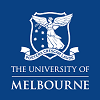
University of Melbourne houses the Faculty of Fine Arts and Music, home to Victorian College of the Arts (VCA). Within the College is an Animation BFA that provides the opportunity to produce an animated short film during every year of the program. For each film, students will work in every role to write, direct, animate, and sound-design their production.
The Animation BFA at University of Melbourne takes place in an intensive, experimental studio-based environment that allows collaboration with peers in programs across Visual Art, Music, Design, Production, and Performing Arts. Courses for the program explore animation research and techniques, storyboarding, experimentation, world building, sound production, writing, project planning, and character creation.
Course examples include Stories of Place, Animation Studio, Writing for Animation, Animation History and Research, Animation Lab, and Collaborative Production. Animation BFA students will have the opportunity to animate, direct, write, and edit short animated film in each year of the program.
The Animation BFA Program at University of Melbourne can be completed in just three years, full-time. Program alumni are prepared for careers in the Film Industry, Game Design, Advertising, Television, Motion Graphics, and Screenwriting for Animation.
Established in 1853, University of Melbourne is the oldest University in Victoria, and the second-oldest in Australia. With more than 54,000 students, University of Melbourne is also one of the top five largest universities in Australia. The school provides nearly 700 programs across 120 majors and approximately 90 study areas.

Queensland University of Technology (QUT) houses the Faculty of Creative Industries, Education and Social Justice. Within the Faculty are two paths to study Animation including the Animation BFA and the Bachelor of Games and Interactive Environments (Animation). The BFA requires a full-time schedule that can be completed in three years. The Bachelor of Games and Interactive Environments (Animation) can be completed in three years full-time, and in six years, part-time.
Both programs feature access to state-of-the-art studios and production facilities; internship opportunities; and study abroad experiences.
The QUT Animation BFA is a studio-based program that explores Animated Filmmaking, Game Development, Visual Arts and Visual Effects (VFX). The Bachelor of Games and Interactive Environments (Animation) explores the technical and creative aspects of game development as well as emerging animation techniques. Students in both programs will work on real and practice-based projects.
Across programs, Animation students may enhance the degree by adding a University-Wide second Major and/or a Creative Industries Minor. Second Major examples include Advertising, Integrated Marketing Communication, and Entrepreneurship and Innovation. Minor examples include Character Animation, Design and Visual Storytelling for Animation, CGI, Digital Media Management, Entertainment, Scriptwriting for Interactive Environments, Interaction Design, Visual Arts Practice, and Screen Studies.
The Animation BFA Program consists of courses such as Advanced Animation Production 1-2, Digital Worlds, CGI Technologies, Visual Storytelling: Cinematic Pre-Visualization, and Digital Creatures. Students in this program will complete several projects, including the Final Capstone.
Bachelor of Games and Interactive Environments (Animation) students will take courses such as Animation Aesthetics, CGI Foundations, Game Production and Technology, Digital worlds, and Visual Storytelling: Production Design.
Games (Animation) students will also complete Game Studio 1: Mini-Game Development, Game Studio 2: Applied Game Development, and Game Studio 3: Game Innovation. The Final Capstone Project will be completed across two courses (Phase 1 and Phase 2). During this time, students will work in teams to complete and market a publishable game.
Graduates of the Animation BFA Program at Queensland University of Technology work in Animation, Advertising, Film and Television Production, Motion Graphics Design, Computer Game Development and Programming, Web Design, Multimedia Design, Visual Art, and Post-Production, among others. BFA Program alumni have worked on major productions such as Spider-Man: Far From Home, Guardians of the Galaxy, Avengers: Endgame, I, Robot, Godzilla, and How to Train Your Dragon.
They have also worked on other productions and video games such as Hellblade and Disney Infinity 3.0 at major studios such as DNEG, Disney Animation, LucasFilm, Weta FX, Rising Sun Pictures, and Animal Logic.
Graduates of the QUT Bachelor of Games and Interactive Environments Program are Animators, Game Programmers, Motion Graphics Designers, Web Designers, Computer Game Developers, Digital Content Producer, Multimedia Designers, Visual Artists, Software Engineers, Computer Systems Engineers, and Post-Production Specialists.
Queensland University of Technology began as Queensland Institute of Technology (QIT) in 1965. The school operating under its current name in 1989. Today, this public research university serves nearly 50,000 students enrolled in more than 400 programs. QUT academic fields span the Business, Engineering, Social Justice, Law, Education, Health, Science, and the Creative industries. Programs at Queensland University of Technology are provided across two campuses that house five faculties.
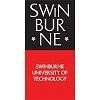
Swinburne University of Technology (Swinburne) is a Toon Boom Center of Excellence. Home to the School of Arts, Social Sciences and Humanities, Swinburne houses the Department of Film, Games and Animation, which has six Animation Programs. Options include a Bachelor of Animation (BA-ANI), Bachelor of Games and Interactivity/Bachelor of Animation (BB-GAMIANI), a Diploma of Screen and Media: Animation, an Advanced Diploma of Screen and Media: Animation, a Certificate IV in Screen and Media, and an Advanced Diploma of Creative Product Development.
Students in all programs have access to state-of-the-art production facilities and studios; opportunities to gain work experience through the Swinburne Internship Program; courses that include hands-on training; individual and collaborative projects; and networking opportunities with studios, businesses, and other organizations.
Across programs, course examples include 2D Production Techniques for Animation, Principles of Game Studies, Writing for Interactive Narratives, Advanced Character Design for Animation, Action Analysis and Locomotion, 3D Production Techniques for Animation, Producing and Production Management for Animation, Dynamics for Games and Animation, Genre and Moving Image, History of Animation, Screenwriting, User-Centered Design & Evaluation, Writing and Directing for Animation, Storyboarding, Action Analysis and Locomotion, and Motion Graphics.
The Animation Programs at Swinburne University of Technology culminate with a Final Animation or Games and Interactivity Project and a professional portfolio. Graduates of all programs are prepared to pursue careers such as Animator, Cinematographer, Stop Motion Animator, Editor, 2D Animator, Director, 3D Animator, Screenwriter, and Producer.
Swinburne University of Technology was founded in 1908 as Eastern Suburbs Technical College. Serving more than 30,000 students from over 150 countries, Swinburne provides a variety of degree and vocational programs in Arts, Engineering, Design, Technology, Health, Business, Science, and Law. Programs at Swinburn are housed across several faculties, eight schools, and four departments.
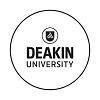
Deakin University is home to the School of Communication and Creative Arts, which has several paths to study Animation. Options include an Animation Diploma, a Bachelor of Film, Television, and Animation, an Animation BDes, and an Animation Minor. The Animation Diploma provides direct access into Deakin University’s Bachelor of Film, TV and Animation. Diploma students will begin the Bachelor’s Program in the second year.
The four-year Bachelor of Film, Television and Animation explores advanced techniques and technologies in filmmaking, television production, and animation. Students in the Animation Minor will select one course from the following: Character Animation, Designing 3D Animated Environments, Character Design and Development for Animation, and Animation Project.
Across the Degree and Diploma programs, students benefit from experiential learning opportunities such as internships and study abroad experiences; access to state-of-the-art equipment in the Deakin TV Studio, labs , and other production facilities; and the opportunity to work on projects with real clients.
Course examples across programs include Principles of Animation, The Australian Moving Image, Visual Effects and Motion Graphics, Writing with the Camera, Animation, Performance, and Capture, Character Design for Animation, and The Celebrity Industries: Star Images, Fan Cultures and Performance. Deakin Animation students will complete a Final Animation Project as the culminating experience for the program.
Together, the Deakin University Diploma and Bachelor’s Degree Programs can be competed in four years. The Bachelor of Film, TV & Animation is a three-year program.
The 3D Animation BDes at Deakin University is recognized by the Design Institute of Australia. The program features courses taught by industry professionals, immersive studios, portfolio development, and projects with local clients. An internship is also part of the program.
Course examples include Animation, Performance, and Capture, Designing 3D Environments, Principles of Animation, Designing 3D Motion, Design Skills and Technologies, Design to Change the World, Interactive Animation Design Studio, Character Design for Animation, and Motion Graphics for Film and Advertising.
The 3D Animation BDes culminates with a Final Animation Project. Students can complete the BDes Program in three years.
Graduates of the Animation and Design Programs at Deakin University have a variety of career options. Examples include Animator, Motion Graphics Designer, Character Artist, Director, Production Manager, Environment Artist, Art Director, Interactive Designer, Game Designer, Creative Director, Illustrator, and Digital Designer.
Established in 1974 Deakin University serves more than 60,000 students across four campuses that house four faculties and 14 schools. Deakin’s more than 200 industry-designed programs cover Art, Engineering, Design, Science, IT, Architecture, Education, Health, Sport, Business, Psychology, Medicine, and more. This public university is accredited and/or recognized by multiple agencies and professionals associations.

The Academy of Interactive Technology (formerly Academy of Information Technology) has trained more than 5,000 students for careers in the Digital and Creative Industries since 1999. For Animators, the Academy of Interactive Technology (AIT) has 2D and 3D Animation Programs leading to a one-year Diploma or a three-year Bachelor’s degree. The Bachelor’s degree can also be completed at an accelerated pace in two years.
All options are available at AIT’s Melbourne and Sydney campuses or in a hybrid (on-campus and online) delivery format.
2D Animation students will explore the 2D Animation Process including Character Development, Storytelling, Drawing, Character Animation, and Directing. Students in this program will master industry software through a variety assignments and immersive labs. Software includes Toon Boom Harmony, Adobe After Effects, Toon Boom Storyboard Pro, Adobe Premiere Pro, Celtx, and Adobe Photoshop.
3D Animation students will explore 3D Visual Effects (VFX) for Film, Games, and Animation. Software includes Autodesk Maya, Maxon Zbrush, Adobe Suite, and Unreal Engine. Across programs, students will take courses such as Concept Design, 2D Animation Mechanics, Screenwriting, Animation FX, 2D Rigging, Visual Storytelling, Animation Layout, 3D Rigging, Screen Revolution, Technical Art, Motion Design, VFX for Film, and 3D Asset Development.
Courses that are unique to the Academy of Interactive Technology, such as The Forge, allow students to develop productions under workplace-like conditions, while being mentored, critiqued, and assessed by industry professionals. The Professional Internship Program provides the opportunity to gain valuable work experience before graduating, and The Industry Launchpad (IL) helps students prepare for and seek employment. IL also helps students build a professional internet and social media presence, and produce effective presentations.
Other AIT benefits include simulated studio environments on campus; access to Animation studios, equipped with cutting-edge technology clay modelling equipment, and Animation light boxes; visiting Animation studios and guest speakers from the industry; access to state-of-the-art post-production studios; mentorship from professional Animators; and access to green screen rooms and audio production studios.
Students in all AIT Animation Programs also benefit from a series of Immersive Animation Experiences, which help develop teamwork, collaboration, interpersonal, creative thinking, problem-solving, and project management skills, among others.
Graduates of the Animation Programs at Academy of Interactive Technology will enter the job market with a professional portfolio of their best work. This includes a showreel, Online Folio, and real-time project in Cinematic Animation or Games.
AIT alumni go on to become Technical Animators, 3D Artists, Illustrators, Cartoonists, Modelers, Art Directors, Game Designers or Developers, Character Animators, Interactive Designers, VFX Artists, Product Designers, Interface Designers, Creative Technologists, Concept Artists, Level Designers, UI/UX Designers, Character Designers, Motion Graphics Designers, Creative Directors, Mobile App Developers, and Multimedia Directors.
The Academy of Interactive Technology was established in 1999. The school specializes in Diplomas, Bachelor’s degrees, and vocational programs in Animation, Game Design, Film, Information Technology, and Interior Design. The Academy of Interactive Technology is a member of NextEd Group.
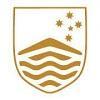
The College of Arts and Social Sciences at Australian National University (ANU) houses the School of Art and Design. Established in 1976, the School serves 700 students from around the globe. With a dedicated Center for Art History and Art Theory (CAH&AT), the interdisciplinary and collaborative ANU School of Art and Design provides a range of studio-based programs. Among them is a Bachelor of Visual Arts (BVART) with a Major in Animation and Video.
The BVART is a three-year, 144 unit program, including the 48 unit Animation and Video Major. Students in this Major will explore 2D and 3D Animation, Virtual Reality (VR), Compositing, Video, and Production. Course examples include: The Digital Workspace, Digital Equipment and Studios, Character Development, Visual Storytelling, Precise Drawing and Model Making, Animation: Creative Possibilities, Introduction to Virtual Reality, and Landscape and Environment.
Students in the ANU Animation and Video Major will work in state-of-the-art computer labs and production studios to create works in an area of specialization. Upon completion of the program, students will have a professional portfolio of their best work.
Graduates of the Animation and Video Program at Australian National University are prepared to pursue careers in Film and Television, Visual Arts, Game Design, Advertising, and other related areas. Some program alumni have gone on to launch their own studios or freelance businesses, while others go on to become educators or enroll in graduate school.
Founded in 1946, Australian National University serves 17,380 students from across Australia and 100 countries around the world. The school comprises a main campus in Canberra, along with three other campuses and two observatories in and around Canberra City. Australian National University is officially recognized by the Department of Education and Training of Australia. Programs at the school are individually accredited by numerous accrediting agencies around the world.